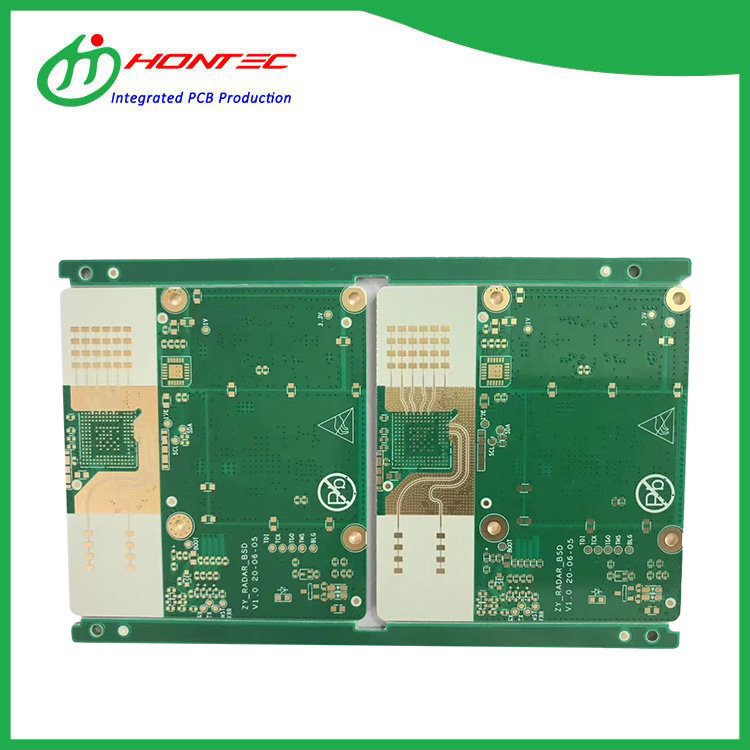High-frequency PCB boards refer to special circuit boards with higher electromagnetic frequencies. They are used in high-frequency and microwave fields. They are produced by using some processes of ordinary rigid circuit board manufacturing methods or special processing methods on microwave substrate copper-clad boards.
The performance of high-frequency boards in wireless or other high-frequency occasions depends on the building materials. For many applications, the use of laminated FR4 materials can improve dielectric properties. We often use Rogers, Ticonic and other boards to make high-frequency PCB boards.
(1) DK should be small and stable enough. Usually the smaller the better. High DK may cause signal transmission delays.
(2) DF should be very small, which will affect the quality of signal transmission. Smaller DF can reduce signal loss.
(3) The thermal expansion coefficient should be as close to that of copper foil as possible, because the difference will cause the copper foil to separate when it changes from hot to cold.
(4) In a humid environment, the water absorption rate must be low. High water absorption rate will affect DK and DF.
(5) Heat resistance, impact resistance, and peeling resistance must be good.
The thermal expansion coefficient of high-frequency PCB boards should be as similar as possible to that of copper foil, because high-frequency circuit boards may cause copper foil separation under alternating hot and cold conditions. Only when they are the same as copper foil can the performance of high-frequency circuit boards be perfectly exerted. High-frequency PCBs have good properties such as heat resistance, chemical corrosion resistance, and impact resistance.

(1) High efficiency
The small dielectric constant of high-frequency PCB boards makes their consumption very small. Under this condition, the induction heating technology at the forefront of technological development can also meet the needs of target heating, making the efficiency of high-frequency circuit boards very high. Of course, while pursuing efficiency, we must not forget environmental protection.
(2) Fast working speed
The transmission speed is proportional to the dielectric constant. The transmission speed is inversely proportional to the square root of the dielectric constant, that is, the larger the dielectric constant, the slower the transmission speed; the smaller the dielectric constant, the faster the transmission speed. This is also one of the reasons why PCB high-frequency boards are popular. It uses special materials, which can well guarantee the characteristics of small dielectric constants, while also ensuring transmission speed, making the operation of the circuit board more stable.
(3) Adaptability
High-frequency PCB boards are widely used in various industries for heating precision metal materials. It can not only achieve heating of components at different depths, but also concentrate heating for local characteristics, whether it is surface or depth, concentrated or dispersed heating methods can be easily completed.
(4) Good tolerance
High-frequency PCB boards can adapt to the environment very well, and its water absorption rate is very low, so it is very adaptable to humid weather. At the same time, high-frequency PCB boards have good corrosion resistance and can be used in different environments.